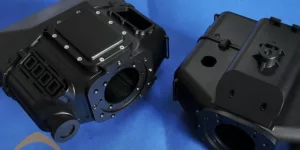New technology is springing up all the time. It’s just the world we live in now. Whether it’s helping us in hospitals or changing the way we drive, it feels like there’s something new popping up every other day. But, it doesn’t actually spring up that easily.
No, new technology can take years to develop. From the initial conception to the actual creating, the process of developing new technology takes a long time. You only have to look at the issues they’ve had with driverless cars to see this.
Making New Technology
One of the most important phases in creating new technology is the prototyping stage. Now, you may not know exactly what this is, but it’s the stage that helps you to define, refine and perfect your products.
This isn’t just a quick job either, as there are many layers to it, depending on what the tech is, and what industry it’s in. However, there are several items such as printed circuit boards, etching and cleaning materials and a whole host of other devices. There are companies from the likes of RS Components that can help you during this stage.
But that doesn’t answer the question; what are the key uses of prototyping? Well, let us break it down for you.
Testing and Evaluating
While your idea and design may look amazing on paper, it’s a known fact that the original concept may be a far cry from the finished product. This will often happen after creating the prototype, which will allow you to sit down with the piece of tech and determine what parts are worth keeping, what should be revised and what should go.
It’ll also allow you to test how the item works. You may find that there are things needed or not needed, which wouldn’t be obvious on paper, that’ll make the item better before you go to production.
Costs and Issues
Once you’ve made the item for the first time, it’ll give you an indication of the overall cost. You’ll then be able to work out how much you’d end up spending, should you mass produce the product.
It’ll also allow you to see what steps are taken, and if any need to be changed to keep the overall cost down. Meanwhile, any difficulties will also be detected, meaning you won’t have any nasty surprises at the end.
Selling the Product
Once you have a prototype, you’ll be able to show it to other people and get them to use it. This will provide valuable feedback on how it works, and whether it’s worth mass producing. After all, you don’t want to produce something no one will need or use.
Patents
Finally, you’ll be able to determine if the product is unique or not. This will also determine whether or not you need a patent.
If the product is already considered unique before manufacturing to the masses, having a prototype will also make it easier for you to sit with a patent attorney to demonstrate why you need one, and what elements are patentable.







